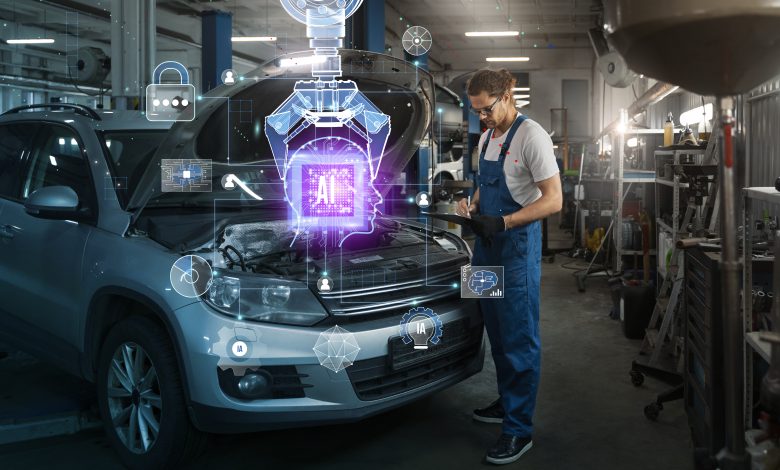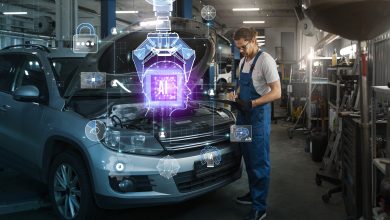What is the Automotive industry? And Explain of History

Introduction
The automotive industry, a dynamic and evolving sector, has significantly shaped modern society. From the early days of horseless carriages to the rearmost electric and independent vehicles, this industry’s journey reflects mortal invention and societal changes.
In this article, we will explore what is the automotive industry. and the automotive industry Explain history.
What is the Automotive industry?
The automotive industry is an involved and fascinating ecosystem that encompasses the system, development, manufacturing, marketing, and deals of motor vehicles. It’s a global mammoth, shaping providence, impacting culture, and constantly pushing the boundaries of technology and invention.
The industry’s heart lies in design studios, where satiny conception cars are born, and bulging manufacturers where these dreams are converted into flashing metal reality. It’s a symphony of professed engineers, Inexhaustible assembly lines, and slice-edge robotics, all working in harmony to produce the vehicles that zoom us through our diurnal lives. But the automotive industry is further than just nuts and bolts. It’s a seedbed of innovation, constantly seeking ways to make our rides safer, cleaner, and more connected. From the dawn of electric vehicles to the futuristic promise of independent driving, the industry is contending towards a reimagined future of transportation.
So, the coming time you are cruising down the highway, take a moment to appreciate the unnoticeable symphony that made your trip possible. The automotive industry is a testament to mortal imagination, and its impact on our world is inarguable.
History of the Automotive Industry?
The journey begins in the 18th century with sputtering Bruce-powered contrivances, further akin to kettles on wheels than the satiny machines we know at the moment. Enterprising minds like Nicolas – Joseph Cannot in France and Richard Trevithick in England paved the way for the internal combustion machine in the 19th century. This was the game- changer – gasoline- powered” horseless carriages” like Carl Benz’s Patent Motorwagen of 1885 hit the scene, marking the dawn of the modern machine.
But early buses were precious toys for the fat. Enter Henry Ford, the American visionary who in 1908, revolutionized the assiduity with the iconic Model T. His assembly line product brought buses within reach of the average consumer, Ever-changing the geography of transportation and society.
The 20th century saw a rapid-fire elaboration. European luxury brands like Rolls- Royce and Ferrari surfaced, while Japan and Korea joined the global race. Meanwhile, America’s” Big Three” – Ford, General Motors, and Chrysler – dominated the market with ever-bigger, flashier models.
Major Developments in Automotive Technology
The automotive industry has witnessed several groundbreaking developments that have dramatically changed the way vehicles are designed, manufactured, and employed. This invention not only increased effectiveness but also enhanced the power and performance of vehicles, paving the way for a new period of automotive design. Another significant vault forward was the integration of safety features, evolving from introductory seat belts to sophisticated airbags and advanced motorist- backing systems.
These inventions have played a pivotal part in reducing road accidents and enhancing passenger safety. Likewise, the emergence of electric and cold-blooded vehicles represents a major shift, driven by the critical need to address environmental enterprises and reduce reliance on fossil energies. This trend isn’t simply about propulsion but encompasses the entire vehicle ecosystem, including battery technology, energy rejuvenescence systems, and featherlight to increase effectiveness.
Noteworthy is the ongoing development of independent vehicle technology, which promises to revise the driving experience. This technology leverages artificial intelligence, detectors, and real- time data to operate vehicles singly, potentially adding road safety and effectiveness. These developments inclusively signify a transformative period in the automotive industry, pressing an ongoing commitment to invention, safety, and environmental stewardship.
Challenges Facing the Automotive Industry
The automotive industry has been facing several challenges in recent years. The COVID-19 ailment has had a significant impact on the industry, leading to product gridlocks, force chain dislocations, and reduced demand. The epidemic has also accelerated the shift towards electric mobility, which has been a challenge for traditional automakers.
The industry is also scuffling with the issue of semiconductor deaths, which have led to product cuts and increased prices. Global frugality is another challenge, with the precarious situation hanging to further shrink the profit pool for the market. The industry is also facing challenges related to changing client conditions, tensing vehicle emigration standards, and resource deaths.
The industry is anticipated to remain vulnerable to global headwinds in 2023, including the energy extremity, slower global demand, and continued force- chain dislocations. The only bright spot will be the electric vehicles request, with deals of reactionary- energy buses and marketable vehicles falling.
The Future of the Automotive Industry
The automotive industry is witnessing a significant transformation, driven by sustainability and changing consumers. The assistance is shifting towards electric mobility, connected buses, onboard detectors, and new business models.
The development of electric vehicles (EVs) is a significant trend that’s shaping the future of the automotive industry. The shift to EVs is causing a rethink of manufacturing vestiges, with lower in-house products and a lesser focus on design and assembly.
The assistance is also fastening on developing new business models, similar to mobility line sharing, to feed to changing client conditions. The industry is anticipated to remain vulnerable to global headwinds in 2023, including the energy extremity, slower global demand, and continued force- chain dislocations.
The automotive assiduity is also scuffling with the issue of semiconductor deaths, which have led to product cuts and increased prices. The assiduity is trying to kick start a recovery, but their sweats are constrained by ongoing force chain issues, semiconductor deaths, and different degrees of lockdown countries assessed to deal with the multitudinous swells and variants of the contagion.
The performing limited or complete product shutdowns further exacerbated the being automotive assiduity challenges of resource deaths and redundant unwanted products.
Conclusion
The automotive industry is a dynamic and influential sector encompassing the entire lifecycle of motor vehicles, from design and manufacturing to marketing and distribution. This industry serves as a foundation of global husbandry, contributing mainly to technological progress, job creation, and structure development.
It revolves around the product of a different range of vehicles, gauging from conventional gasoline-powered buses to electric and cold-blooded druthers. The history of the automotive industry is a fascinating trip marked by nonstop elaboration.
Beginning in the late 19th century with the arrival of motorized vehicles, settlers like Karl Benz and Henry Ford laid the roots for an industry that would revise transportation. Beforehand motorcars were drafted through homemade processes, but over time, advancements in manufacturing ways, assembly line styles, and technological invention propelled the industry into new borders.


One Comment